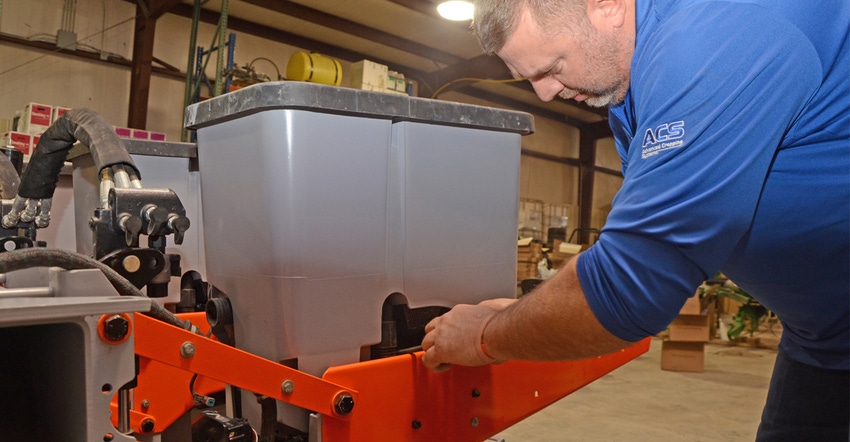
It has been nearly six years since Kinze unveiled its concept electric multi-hybrid planter. And in that time, the prospects of planting multiple hybrids or varieties in a single field or even a single pass have been a hot topic of discussion.
Oftentimes, new multi-hybrid planters come with a price tag of about $30,000 more than the cost of a conventional planter of the same size — already a big investment for most farmers.
So, in 2017, Central Valley Ag kicked off a series of research trials to evaluate ways to optimize the return on investment from this technology — and using a lower-cost approach.
Until this year, the setup involved a 1992 John Deere 7200 six-row planter, retrofitted with Precision Planting vSet Select units, used on eight sites in Nebraska and Kansas. Now, CVA is in the process of revamping another 7000 series planter, although this one is an eight-row.
"We are going away from a three-point, six-row planter to a drawn eight-row planter," says Keith Byerly, Advanced Cropping Systems (ACS) manager with CVA. "In the process of rebuilding, we decided to stay with the vSet Select because it's probably better for plot research. It's got two separate meters. It literally can switch form one hybrid to another and not have any lag. It can maintain the seed spacing and still change the hybrid."
Byerly says CVA had considered using mSet units as well — a single meter setup — along with two hoppers. While this would have meant a lower cost, less moving parts and less plates to switch when switching crops, it also would make it more difficult to draw clear lines between hybrids and varieties.
"It has a mechanical door over the seed pit and switches which hopper is dumping into the seed meter to feed the meter," Byerly says. "So you have one less meter, but when you switch hybrids, you get a blend of seeds for about 20 to 30 seeds while you're switching. That's about the equivalent of 18 feet. In the real world, a little blend isn't going to make any difference, but for research, we want it to be down to the line."
The planter also will keep several components from the previous planter, including Precision Planting SmartFirmer seed firmer sensors, WaveVision seed sensors, CleanSweep row cleaner adjustment system, vDrive planter drive system for variable-rate seeding capabilities, and DeltaForce automatic downforce control.
Otherwise, it will look completely different, says Mick Goedeken, ACS innovation agronomist at CVA. In addition to two more rows, the planter also will be a different color — powder-coated gray and orange — and will be a front-fold unit, allowing for easier transport down the road.
"That allows us to transport it from our sites in Kansas to northern Nebraska and cover our entire territory," Goedeken says. "That was the hiccup for the six-row unit. It was a little wide for transport down the road."
Using an eight-row unit also syncs better with the fields where the trials are taking place, making it easier to harvest with a modern combine head and ultimately simulating a full-field situation rather than small plot research, Goedeken adds.
And, CVA also is adding some other new features to the planter as part of the rebuild.
"We had it sandblasted and powder-coated,” Goedeken says. “It has everything the old planter had, plus we've added in the 360 Bandit system [from 360 Yield Center] for nitrogen management. It's a matter of getting nitrogen out early on and getting it covered up, so we don't lose it, and spreading N risk across the different timings. We're potentially looking at some new toys, like Precision's new SmartDepth auto-depth control, so we can get uniform emergence, and FurrowForce automated closing system."
With these upgrades, a big goal for the research — in addition to testing the potential for multi-hybrid planting in different field environments — is to demonstrate a low-cost approach to upgrading a nearly 30-year-old planter, rather than buying a brand-new multi-hybrid planter.
"The cost of revamping the planter you already own with this technology is generally 40% less than going to the floor and buying a brand-new planter with the same technology," Byerly says.
About the Author(s)
You May Also Like






